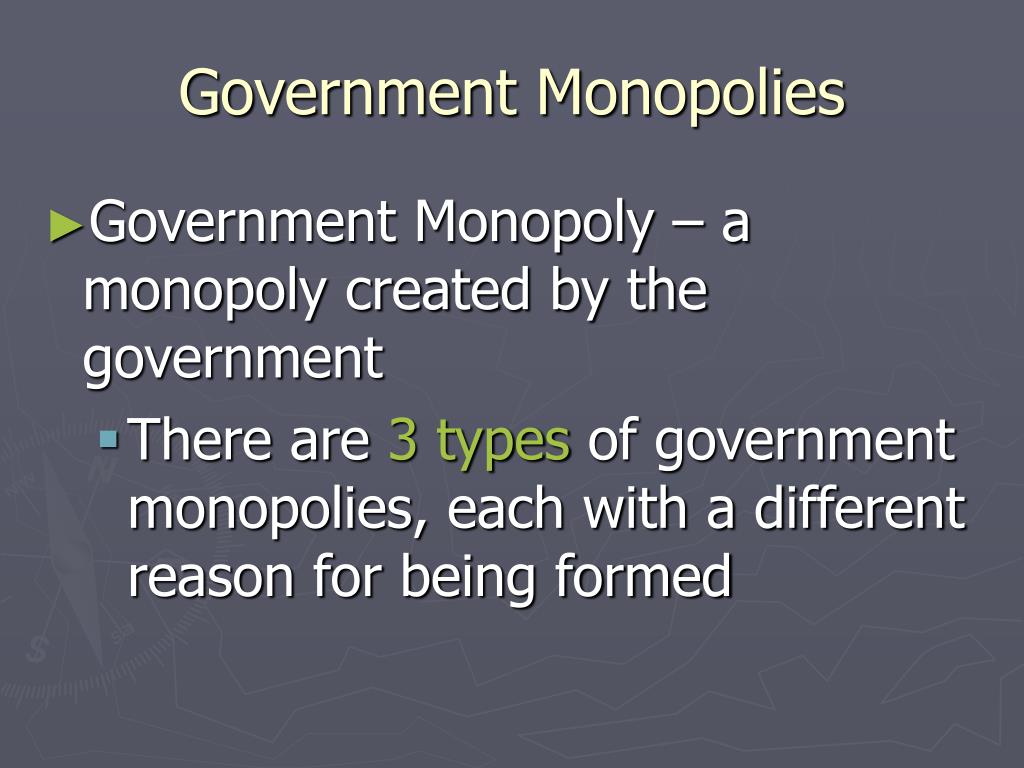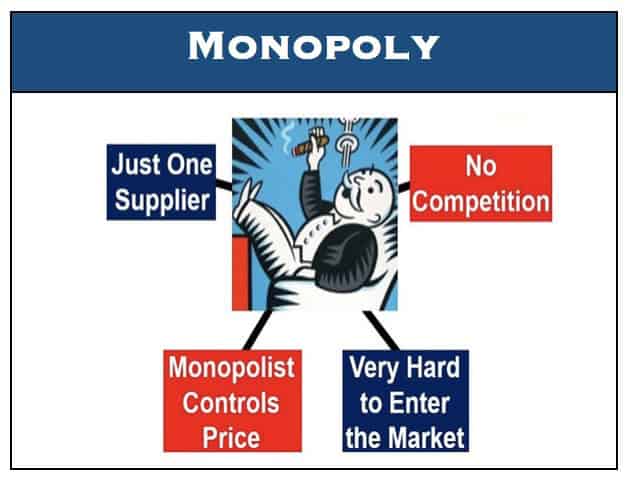
Control of a Physical ResourceĪnother type of monopoly occurs when a company has control of a scarce physical resource. Moreover, the costs of transporting cement over land are high, and so a cement plant in an area without access to water transportation may be a natural monopoly. For example, cement production exhibits economies of scale, and the quantity of cement demanded in a local area may not be much larger than what a single plant can produce. These industries offer an example where, because of economies of scale, one producer can serve the entire market more efficiently than a number of smaller producers that would need to make duplicate physical capital investments.Ī natural monopoly can also arise in smaller local markets for products that are difficult to transport. It would be costly and duplicative for a second water company to enter the market and invest in a whole second set of main water pipes, or for a second electricity company to enter the market and invest in a whole new set of electrical wires. Once the electric company installs lines in a new subdivision, the marginal cost of providing additional electrical service to one more home is minimal. For example, once a water company lays the main water pipes through a neighborhood, the marginal cost of providing water service to another home is fairly low. This results in situations where there are substantial economies of scale. Natural monopolies often arise in industries where the marginal cost of adding an additional customer is very low, once the fixed costs of the overall system are in place. A natural monopoly occurs when the quantity demanded is less than the minimum quantity it takes to be at the bottom of the long-run average cost curve.Įconomists call this situation, when economies of scale are large relative to the quantity demanded in the market, a natural monopoly. If the second firm attempts to enter the market at a larger size, like 8,000 planes per year, then it could produce at a lower average cost-but it could not sell all 8,000 planes that it produced because of insufficient demand in the market.įigure 9.2 Economies of Scale and Natural Monopoly In this market, the demand curve intersects the long-run average cost (LRAC) curve at its downward-sloping part. If a second firm attempts to enter the market at a smaller size, say by producing a quantity of 4,000 planes, then its average costs will be higher than those of the existing firm, and it will be unable to compete. In this situation, the market has room for only one producer. Now consider the market demand curve in the diagram, which intersects the long-run average cost (LRAC) curve at an output level of 5,000 planes per year and at a price P 1, which is higher than P 0. It shows economies of scale up to an output of 8,000 planes per year and a price of P 0, then constant returns to scale from 8,000 to 20,000 planes per year, and diseconomies of scale at a quantity of production greater than 20,000 planes per year. Figure 9.2 presents a long-run average cost curve for the airplane manufacturing industry. (We introduced this theme in Production, Cost and Industry Structure). Natural MonopolyĮconomies of scale can combine with the size of the market to limit competition. There are five types of monopoly, based on the types of barriers to entry they exploit. Thus, in markets with significant barriers to entry, it is not necessarily true that abnormally high profits will attract new firms, and that this entry of new firms will eventually cause the price to decline so that surviving firms earn only a normal level of profit in the long run.

Barriers may block entry even if the firm or firms currently in the market are earning profits. In other cases, they may limit competition to a few firms. In some cases, barriers to entry may lead to monopoly.

Once an entrepreneur or firm has purchased the rights to all of them, no new competitors can enter the market.

For example, there are a finite number of radio frequencies available for broadcasting. Barriers to entry can range from the simple and easily surmountable, such as the cost of renting retail space, to the extremely restrictive. Barriers to entry are the legal, technological, or market forces that discourage or prevent potential competitors from entering a market. These profits should attract vigorous competition as we described in Perfect Competition, and yet, because of one particular characteristic of monopoly, they do not. Analyze the importance of trademarks and patents in promoting innovationīecause of the lack of competition, monopolies tend to earn significant economic profits.Explain how economies of scale and the control of natural resources led to the necessary formation of legal monopolies.Distinguish between a natural monopoly and a legal monopoly.By the end of this section, you will be able to:


 0 kommentar(er)
0 kommentar(er)
